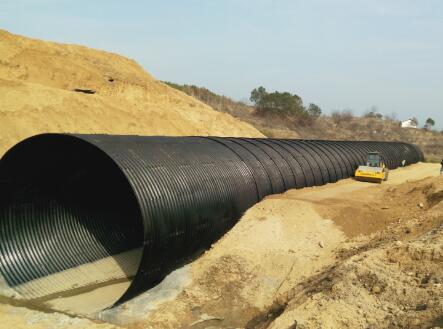Mastering the Art of Cutting Culvert Pipe: Tips and Techniques
Cutting culvert pipe may seem like a daunting task, but with the right tools and techniques, it can be accomplished efficiently and accurately. Whether you're installing a new drainage system or repairing an existing one, knowing how to cut culvert pipe properly is essential for achieving a precise fit and ensuring optimal performance.
1. Gather the Necessary Tools and Materials:Before you begin cutting the culvert pipe, make sure you have the following tools and materials on hand:
Measuring tape or ruler
Marker or chalk
Hacksaw, reciprocating saw, or angle grinder with a metal-cutting blade
Safety gloves and goggles
Workbench or sturdy surface for support
2. Measure and Mark the Cutting Line:Using a measuring tape or ruler, determine the desired length of the culvert pipe and mark the cutting line with a marker or chalk. Double-check your measurements to ensure accuracy, as cutting too much or too little can affect the fit and functionality of the pipe.
3. Secure the Culvert Pipe:Place the culvert pipe on a stable workbench or surface, ensuring it is securely supported and will not move during the cutting process. If necessary, use clamps or other securing devices to hold the pipe in place and prevent it from shifting.
4. Choose the Right Cutting Tool:Select the appropriate cutting tool based on the material and thickness of the culvert pipe. Hacksaws are suitable for cutting through PVC or plastic pipes, while reciprocating saws or angle grinders with metal-cutting blades are better suited for cutting through metal or concrete pipes.
5. Cut Along the Marked Line:Carefully align the cutting tool with the marked cutting line on the culvert pipe. Hold the tool securely and apply steady pressure as you begin cutting through the pipe. Take your time and use smooth, even strokes to ensure a clean and straight cut.
6. Wear Safety Gear:Always wear safety gloves and goggles when cutting culvert pipe to protect your hands and eyes from flying debris and sharp edges. Additionally, be mindful of sparks and heat generated by power tools, especially when cutting through metal or concrete pipes.
7. Check the Cut for Accuracy:Once you've completed the cut, carefully inspect the edges of the culvert pipe to ensure they are smooth and even. Use a file or sandpaper to remove any rough edges or burrs that may interfere with the installation or cause injury.
8. Test Fit the Pipe:Before installing the culvert pipe, test fit it in the desired location to ensure it fits properly and aligns with other pipe sections or fittings. Make any necessary adjustments or modifications as needed to achieve a snug and secure fit.
9. Dispose of Waste Material Responsibly:Dispose of any waste material, such as cutoffs or scraps of culvert pipe, responsibly according to local regulations and environmental guidelines. Recycle or reuse materials whenever possible to minimize waste and reduce your environmental impact.
Conclusion:By following these step-by-step instructions and safety guidelines, you can master the art of cutting culvert pipe with confidence and precision. Whether you're a seasoned contractor or a DIY enthusiast, knowing how to cut culvert pipe properly is an essential skill that will serve you well in various drainage and construction projects. With the right tools, techniques, and attention to detail, you can achieve professional-quality results and ensure the success of your project.


